Sleep
Sleep
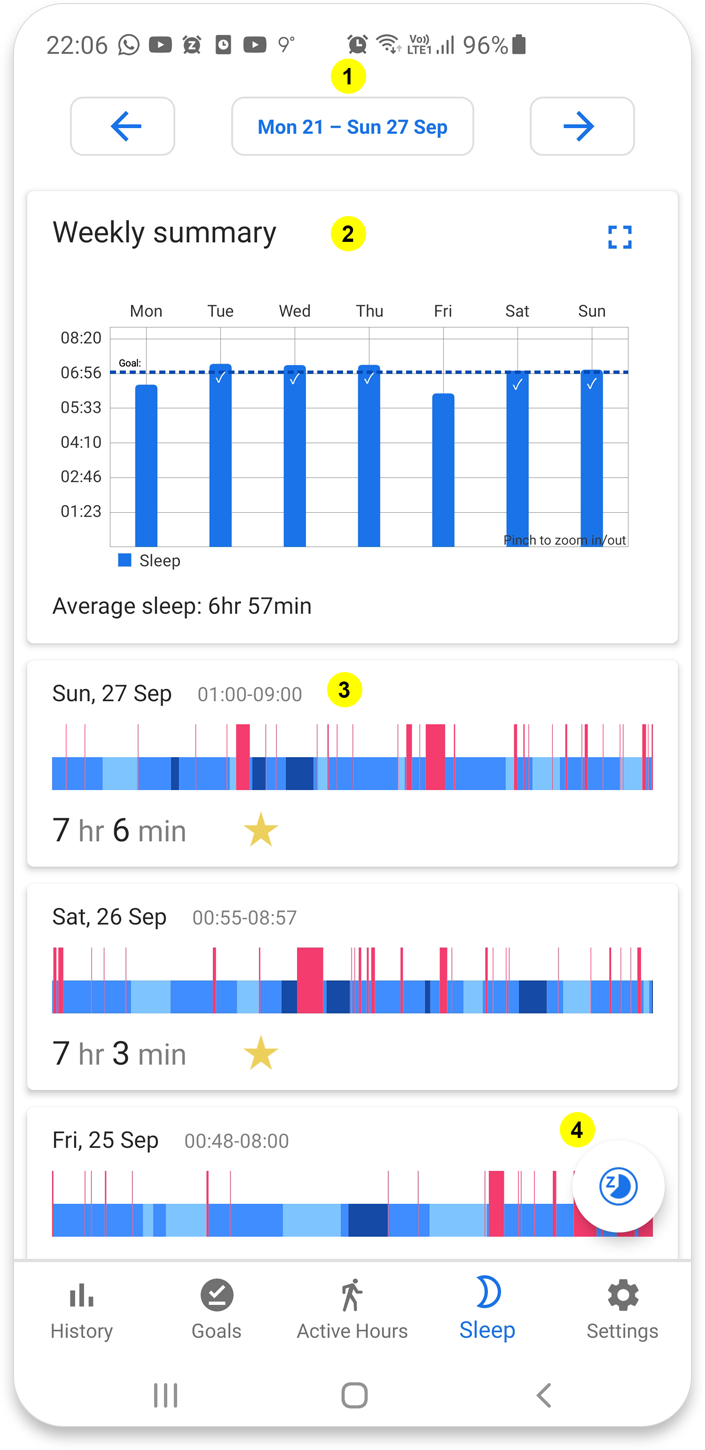
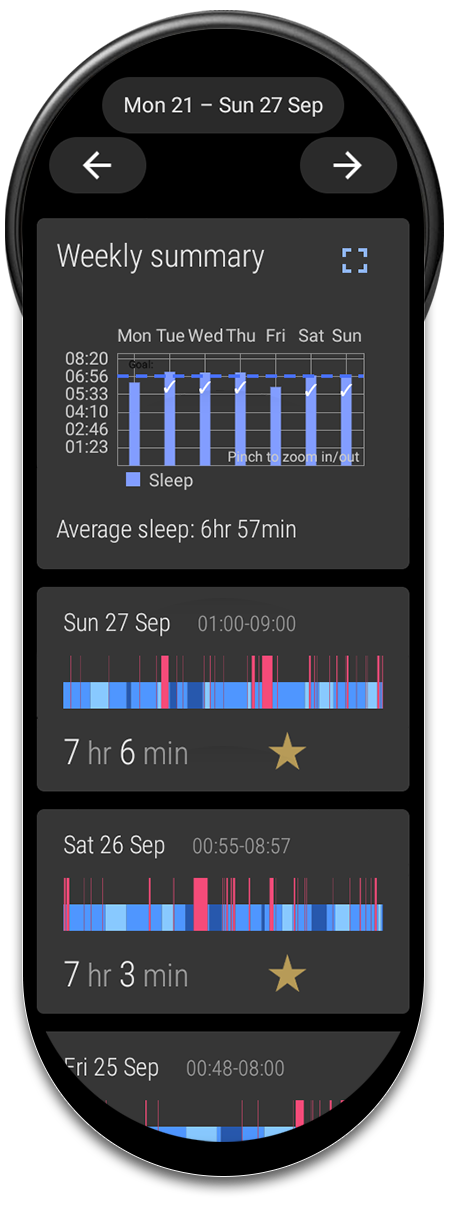
In the Sleep tab you can analyze your nightly sleep and view your sleep history.
The Sleep tab shows your sleep data on a weekly basis and is divided in 2 parts: a summary of your weekly sleep duration followed by details on each night’s sleep.
You can expand the Summary card to analyze your entire sleep duration history, both on total level and broken down by sleep stages. You can also see the weekly and monthly sleep duration averages.
You can also expand the nightly sleep cards by clicking on them. This will show further details on that night’s sleep. You can see things like a your sleep stages during the sleep and sleep heart rate *). You can also see a summary breakdown of your sleep stages during the sleep.
- Date navigation
Use the arrows to navigate back and forward on a weekly basis. If you would like to quickly switch to a specific week you can tab the middle button. This will popup a window to change to another date.
- The weekly summary card
This show a summary of the sleep duration for a particular week. You can tap on a bar to see the exact sleep duration for that date.
If you have set a sleep goal it will show a dashed line to indicate this. If you fulfilled the sleep goal there will be check mark on that particular night.
Pressing the [] button will open a new window where you can browse your entire sleep history (see point 6-10 below).
- The sleep details cards
This will show an overview of each sleep session you have logged.
It will show bedtime and wake up time, time asleep (excluding awake times during sleep) as well as an overview of the sleep stages during the sleep.
Clicking on a card will open up the Sleep details window with more details on the sleep session (see point 12-17 below)
- Add or modify sleep goal
Click the floating action button to add or modify your sleep duration goal.
The sleep statistics page
Here you can browse your entire sleep history. You open this page by clicking the [] button on the Weekly Summary card in the Sleep tab.
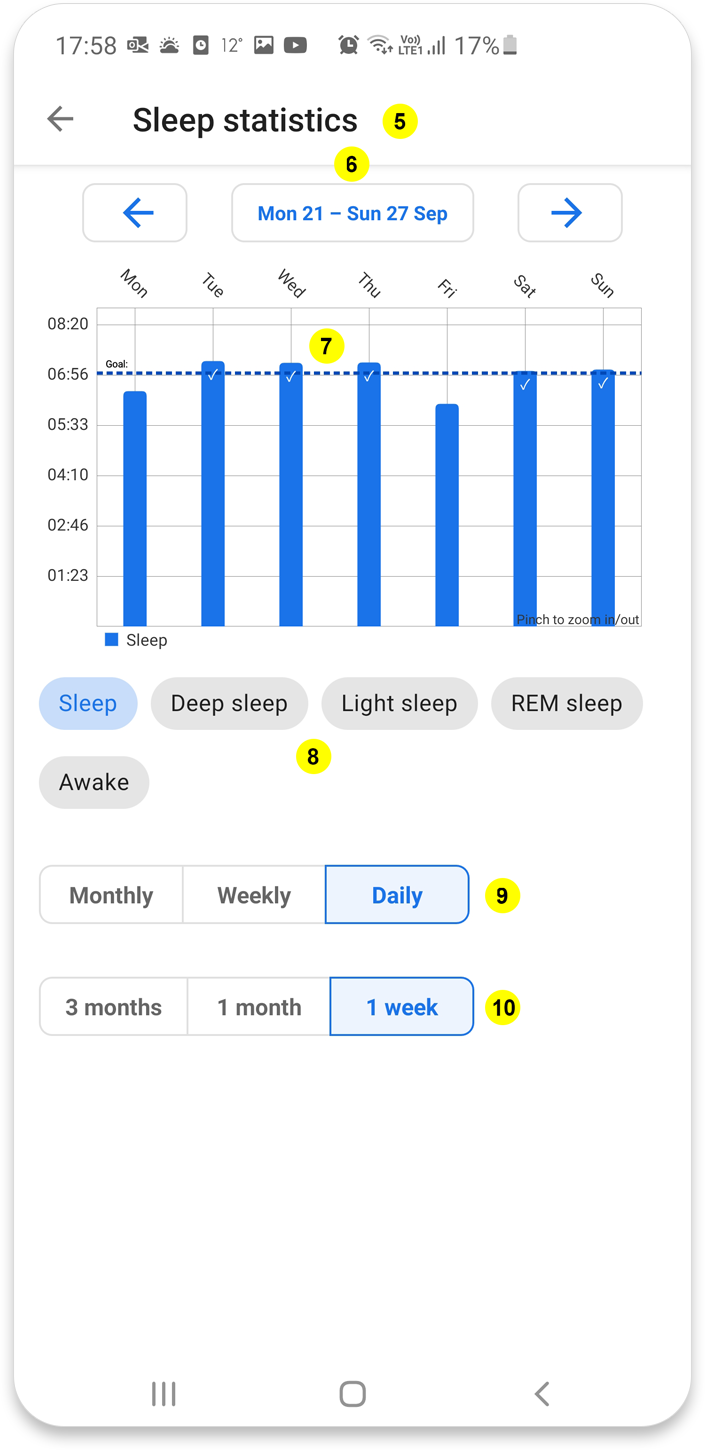
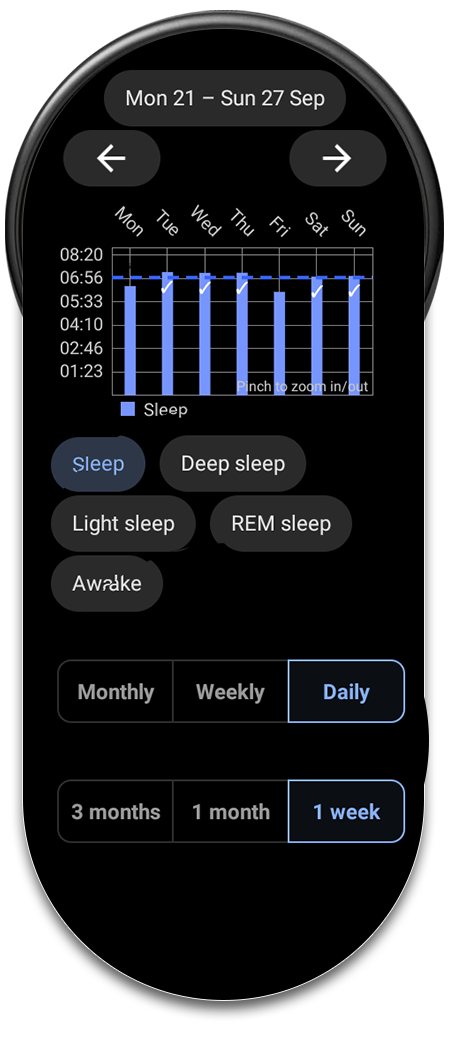
- Date navigation
Use the arrows to navigate back and forward in time. If you would like to quickly switch to a specific week you can tab the middle button. This will popup a window to change to another date.
- Sleep duration history chart
This chart shows the sleep duration for the selected resolution (daily/weekly/monthly) and time span.
- Sleep stage selection
Select to either see the total sleep duration (minus awake times) or broken down by sleep stages.
- Daily/weekly/monthly view
Choose between a daily, weekly or monthly breakdown of your sleep. Weekly and monthly breakdown will show your average sleep duration for that week/month.
- Time span
Here you can select the time span to show. What time spans to select will change depending on if you show daily, weekly or monthly data.
The sleep details page
Here you can see details about a particular sleep session. You open this page by clicking the on one of the sleep details cards in the Sleep tab.
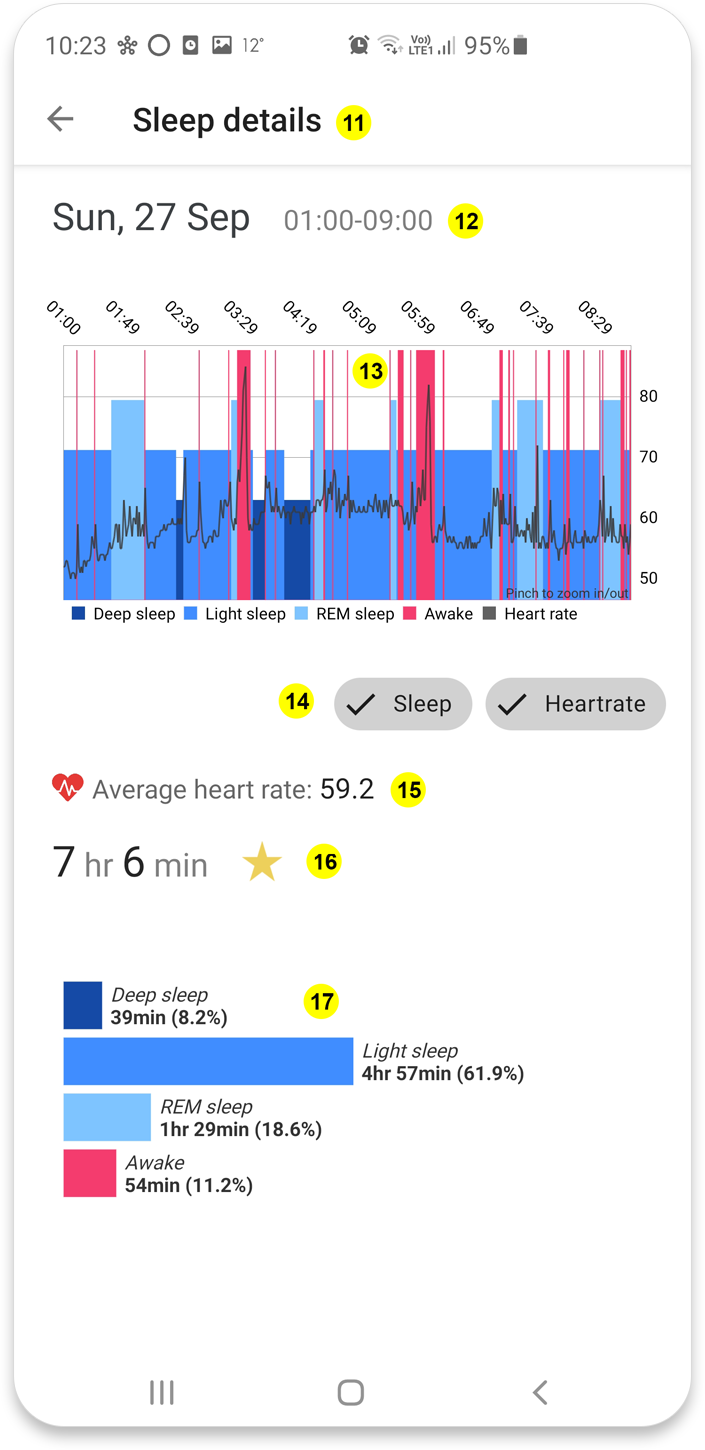
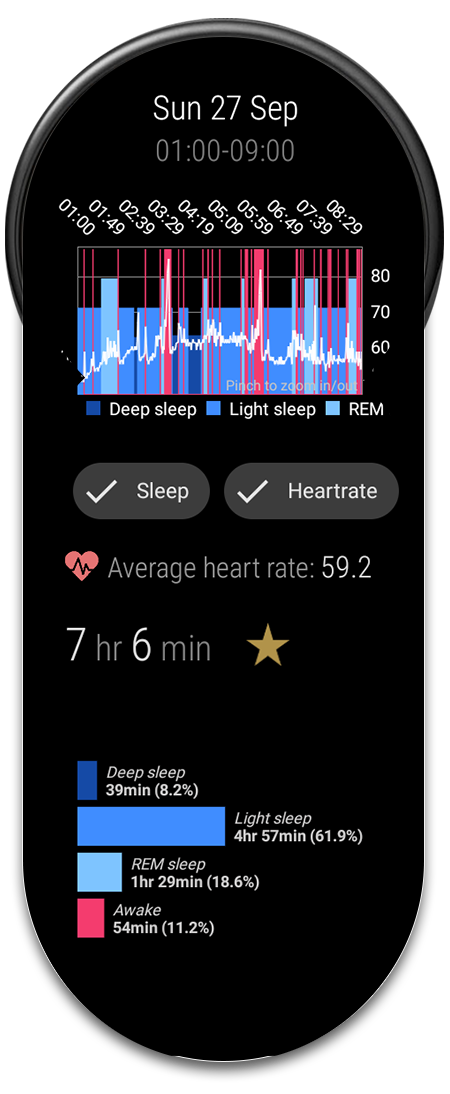
- Bed time and wake up time
This shows your bedtime and your wake up time.
- Sleep break down chart
This shows a breakdown of your sleep stages during the sleep as well as your heart rate *). You can zoom in on the chart to see more details.
- Show/hide charts
This will show/hide the sleep stages charts or the heart rate charts.
- Average heart rate
This shows your average heart rate during your sleep *).
- Sleep duration
This shows your total sleep duration (minus awake times)
- Sleep stage summary
This shows a summary of each sleep stage during your sleep.
*) Sleep stages and sleep heart rate need to be supported by your sleep tracker.
Sleep offset setting
In the Settings tab you can find a setting for the sleep offset time. The sleep offset time is from what time in the previous day the sleep should count towards the next day for sleep duration goals or when viewing sleep duration in the History tab.
Nigthly sleep sessions usually spans over 2 dates. Sleep duration goals will only count time from the actual date if this offset is not applied. The default time is 8pm.
Popular sleep tracking apps and how they store data in Google Fit
- Google Fit app
You can add sleep manually using the Google Fit app. This app does not have support for sleep stages so sleep will be stored using the Sleep data type only. - Fitbit or Garmin sleep tracking devices
These sleep tracking devices do not have support to store sleep data directly in Google Fit. However there are a number of apps and web services that can be used to transfer the sleep data from Fitbit/Garmin to Google Fit. Here is a list of a few:- Health Sync
This Android app can be used to transfer data from Fitbit and Garmin to Google Fit. It has support for sleep stages. It currently seems like the most accurate sleep synchronzation service and the sleep data is usually transferred correctly into Google Fit.
- FitToFit
This Android app can be used to transfer data from Fitbit to Google Fit. It has support for sleep stages. However, periods of sleep awake times shorter than 3 minutes are not transferred to Google Fit. Instead these shorter period are counted towards any of the 3 other sleep stages. This makes the total sleep times slightly different compared to the original time in Fitbit.
- FitnessSyncer
This is a web service which support a multitude of sleep trackers, including Fitbit and Garmin. It has support for sleep stages. However, when testing how sleep data is transferred to Google Fit it seems like some of the sleep stage periods are missing when stored in Google Fit. This makes the sleep data incorrect.
- Health Sync
- Sleep As Android
This Android app has support for syncronizing with Google Fit. It has support for sleep stages. However, it appears to not store sleep awake times in Google Fit. Instead it stores sleep awake periods under the general Sleep data type.